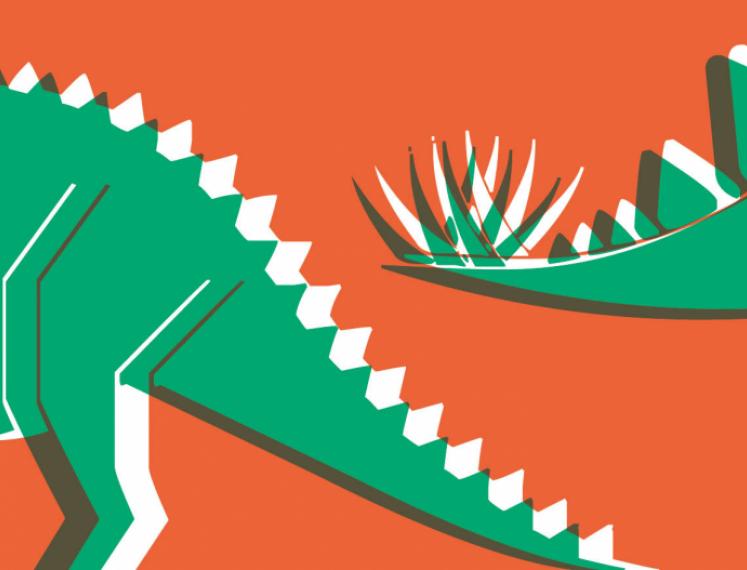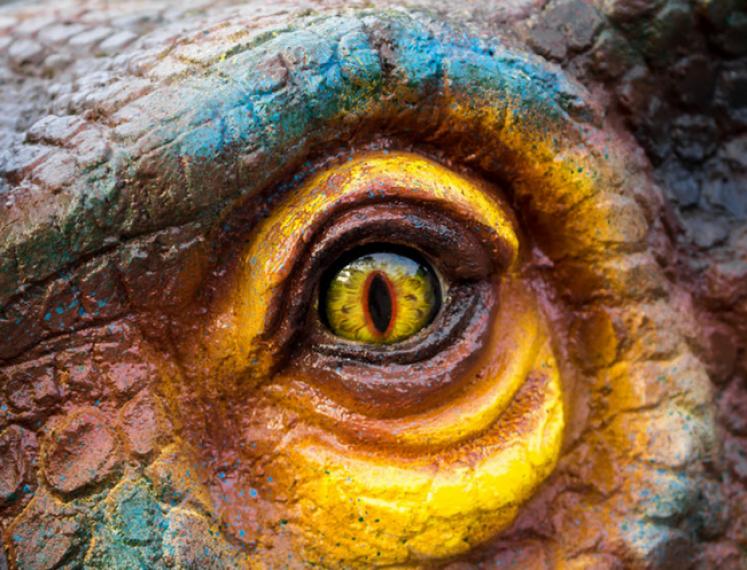
Imaging Dinosaurs
From the moment dinosaurs were discovered in the early 19th century, they were used as a symbol of wild, uncontrollable nature. Is our image of dinosaurs as giant monsters accurate? As part of our lecture series on dinosaurs, Ilja Nieuwland will talk about what dinosaurs mean to us, and what they say about our world on September 29 in his lecture Big, Fierce and Extinct.
Ilja Nieuwland is a cultural historian of science attached to the Vrije Universiteit Amsterdam and the Netherlands Academy of Arts and Sciences. He is mainly interested in the history of life and earth sciences. Last year, he published American Dinosaur Abroad. A Cultural History of Carnegie's Plaster Diplodocus (University of Pittsburgh Press). We asked him three questions.
Q: Where does your own fascination from Dinosaurs come from that made you research these creatures?
A: From childhood, really. As an eight-year-old or so, I got hold of a 1950's comic about paleontology – this was in the 1970s, in a time when dinosaur books for children were still pretty rare. However, what struck me was how fascinating all these people were that were studying these animals. Most of those images have since been thoroughly discredited, but it was my stimulus to get into the history of science and particularly the history of paleontology. I also studied biology for a while in addition to my major in history, so the history of paleo is the ideal combination of interests for me.
Q: What unexpected fact(s) about Dinosaurs did you discover during research?
A: How fluid the image of prehistoric animals has always been. Depending on our ideas about society, politics, religion and so forth, we have given these animals a different place in our image of the history of the earth and our own world view. And sometimes that has been a rocky road, with older and newer, often contradictory images existing side by side.
Q: What myth breaker can you tell us about Dinosaurs?
A: They weren’t all massive and they weren’t all grey lumps of meat waiting for extinction. As a group, dinosaurs are at least as diverse as mammals or reptiles. And yes, I do include birds in that.
Read on…
In September, you’ll get a 10% discount on the book The Rise and Fall of the Dinosaurs from Steve Brusatte at Boekhandel van der Velde Grote Markt in Groningen (store only) if you mention Studium Generale with your purchase. Can’t get enough of dinosaurs? They also selected these two other books for this discount: The Dinosaurs Rediscovered: How a Scientific Revolution is Rewriting History by Michael J. Benton and Too Big to Walk: The New Science of Dinosaurs by Brian J. Ford.


